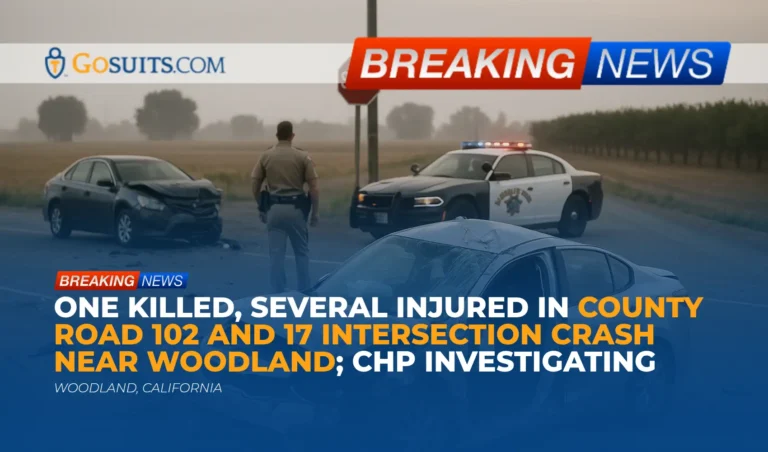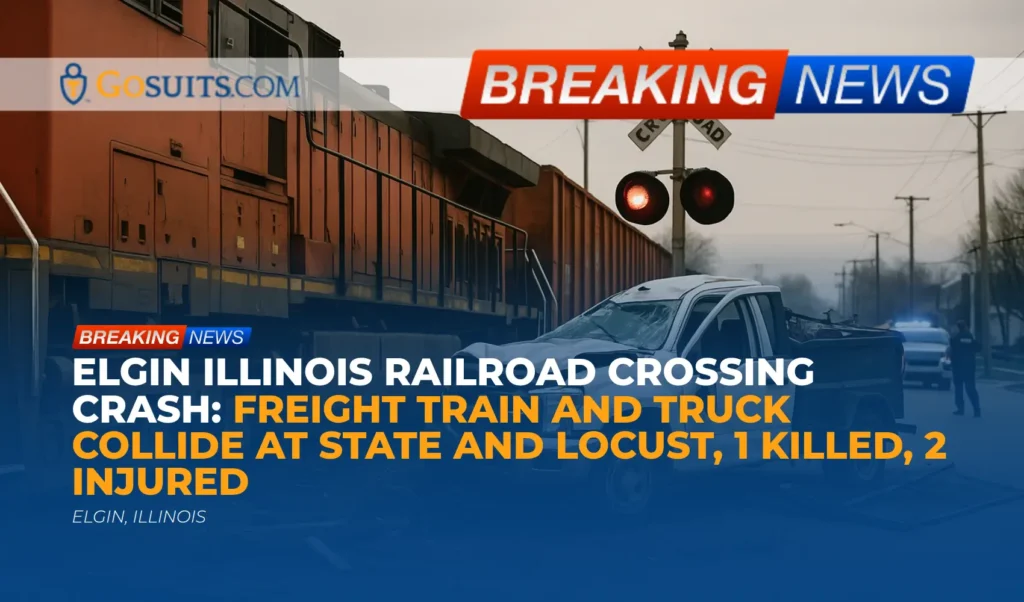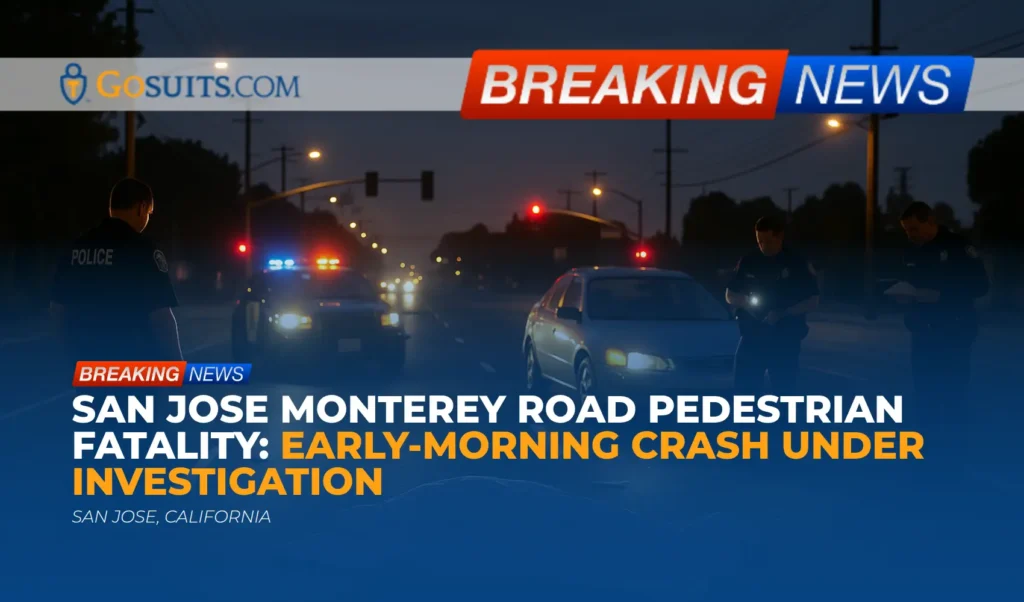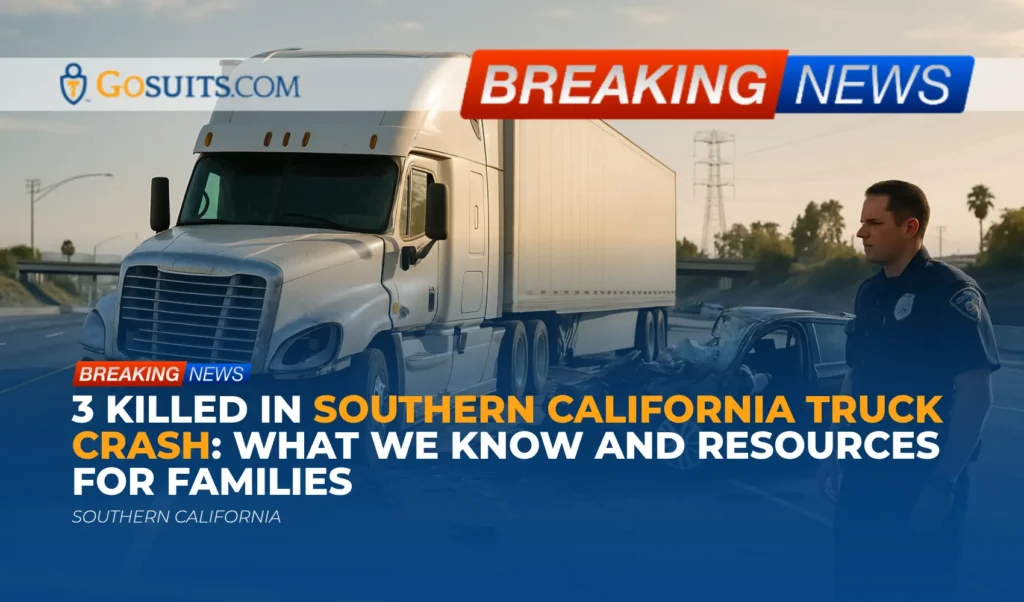- What we know about the Woodland collision
- Why rural intersection crashes happen
- Legal considerations for those affected in California
- Records and reports to obtain
- Safety notes for the community
- How crash investigations typically proceed
- Commentary from Gosuits Woodland, California Personal Injury Attorney
- Why acting now matters
What we know about the Woodland collision
One person lost their life and several others suffered major injuries after a two-vehicle crash at the rural intersection of County Road 102 and County Road 17, just northeast of Woodland in Yolo County, California. The California Highway Patrol (CHP) reported the crash around 6:30 a.m. Investigators shared that a Toyota sedan traveling southbound on County Road 102 allegedly failed to stop at a stop sign and collided with a Kia sedan that was crossing the intersection at County Road 17. One occupant in the Kia died from their injuries. The Toyota driver and two other Kia occupants sustained major injuries and were transported to a hospital. The deceased was transported to the Yolo County Coroner’s Office.
Responders observed one heavily damaged vehicle with debris on the roadside shoulder, and a second vehicle that came to rest in a nearby orchard. As of late morning, County Road 102 remained closed in the vicinity of the crash scene to allow for investigation and clearing. CHP has not yet determined the underlying cause, and investigators indicated they do not know whether fog or other weather conditions played a role. Ages and genders of those involved were not released at the time of reporting.
Location, traffic impacts, and response
The crash site is in a rural farming area north of Interstate 5, where County Road 102 meets County Road 17. This is a stop-controlled intersection. CHP officers, Woodland Police, and fire personnel, including Cal Fire, responded. CHP’s public information officer was expected to provide more details later in the day. Road closures extended roughly around the intersection during the on-scene investigation; drivers in the area experienced detours and delays.
Preliminary facts that matter
According to CHP’s initial account, failure to stop at the posted stop sign on County Road 102 is under investigation as a contributing factor. At the same time, investigators will look at visibility, signage, sightlines, driver behavior, roadway design, and environmental factors to determine all potential contributing causes. It remains unknown whether the person who died was the driver or a passenger in the Kia.
Why rural intersection crashes happen
Rural intersections often combine higher speeds, fewer visual cues, and long, uninterrupted stretches of roadway. Even a momentary lapse at a stop sign can have devastating consequences when cross traffic is moving at 55 mph or more. National roadway safety agencies provide important context for why these crashes occur and how they can be prevented.
Stop-controlled intersections and crash risk
The Federal Highway Administration notes that intersections are a major focus area for severe crashes; a significant share of traffic fatalities occur at intersections each year, with stop-controlled rural intersections presenting specific risks related to sight distance, driver expectancy, and compliance with traffic control devices. Treatments like enhanced sign visibility, rumble strips, improved lighting, and geometric changes can reduce both the frequency and severity of intersection crashes. See FHWA’s intersection safety resources for data and proven countermeasures at safety.fhwa.dot.gov/intersection/.
Visibility, fog, and early-morning driving
Early morning conditions in agricultural corridors can include fog, glare, or dust, all of which reduce detection time. While CHP said it is unknown whether weather was a factor here, safe-driving practices in low-visibility conditions include reducing speed, using low-beam headlights, and increasing following distances. NHTSA provides additional guidance on driving in adverse conditions at nhtsa.gov.
Rural roads and injury severity
Crashes on rural roads are more likely to produce severe injuries or fatalities due to higher travel speeds, longer EMS response times, and roadside hazards like ditches or trees. The Centers for Disease Control and Prevention highlights that rural residents face higher motor vehicle crash death rates compared to urban residents, underscoring the need for extra caution in rural environments. More information is available from CDC at cdc.gov/transportationsafety/rural/index.html.
Legal considerations for those affected in California
When a serious crash happens at a stop-controlled intersection, several layers of civil liability and insurance coverage may be involved. The discussion below is for general information, not a directive. Every situation is different, and facts matter.
Right-of-way and stop sign duties
California law requires drivers to stop at stop signs and yield the right-of-way when appropriate. Two key statutes often reviewed in intersection collisions include:
- Vehicle Code section 22450: Requires drivers to stop at a stop sign at the entrance to an intersection. See the statute at leginfo.legislature.ca.gov.
- Vehicle Code section 21802: Requires drivers at a stop sign to yield the right-of-way to any vehicle that has approached or is approaching so closely as to constitute an immediate hazard. See the statute at leginfo.legislature.ca.gov.
When a driver fails to stop or yield as required, that conduct may be considered negligence in a civil claim, assuming the evidence supports it. However, investigators and courts also consider visibility, signage, roadway layout, lighting, and other factors that could share or shift responsibility.
Comparative fault in California
California follows a comparative fault framework. That means responsibility can be allocated among multiple parties in proportion to their contributions to the crash. Even where one driver appears to have violated a traffic law, other contributing factors may be evaluated, such as the placement or condition of stop signs, obstructed sightlines, or vehicle speed. The state’s general negligence principles are rooted in Civil Code section 1714, and juries are instructed on negligence and causation through California’s civil jury instructions administered by the Judicial Council (see resources at courts.ca.gov).
Potential public entity liability for dangerous conditions
If an intersection is alleged to be unreasonably dangerous due to design, maintenance, or lack of proper warnings, a claim may involve a public entity responsible for the roadway. California’s Government Code outlines when a public entity can be liable for a “dangerous condition of public property.” See Government Code section 835 at leginfo.legislature.ca.gov.
Claims against public entities have strict deadlines under the Government Claims Act. Many claims must be presented within six months of the incident. See Government Code section 911.2 at leginfo.legislature.ca.gov. These timelines are short and technical, so it is important to understand them early.
Time limits for civil cases
- Personal injury and wrongful death: In general, California Code of Civil Procedure section 335.1 provides a two-year period for filing actions for injury or death caused by wrongful act or neglect. See leginfo.legislature.ca.gov.
- Claims involving public entities: As noted, written claims must often be presented within six months before any lawsuit can proceed. See Government Code section 911.2 at the link above.
There are exceptions and special rules in some circumstances. Deadlines can be affected by the involvement of public entities, the age of an injured person, or other factors.
Insurance coverage considerations
Motor vehicle crashes often involve multiple coverages: the at-fault driver’s liability insurance; medical payments coverage (Med-Pay) that may exist on one’s policy; and uninsured/underinsured motorist coverage (UM/UIM) if the at-fault driver’s coverage is limited. Communication with insurance adjusters can affect how a claim is evaluated. It is generally wise to consult an attorney first before providing recorded statements or broad authorizations, because what is said to an insurance company can be used later to minimize a claim.
DMV reporting requirement after injury crashes
California requires drivers to file a traffic accident report (Form SR-1) with the Department of Motor Vehicles within 10 days if there is injury, death, or property damage exceeding the state threshold. Information and the form are available at the DMV’s website: dmv.ca.gov. Before communicating with insurers or completing forms that require statements about fault, consider consulting an attorney to understand rights and obligations.
Records and reports to obtain
Collecting official records helps families and injured people understand what happened and preserve their rights. The following resources are commonly requested after a serious crash.
CHP collision report
Traffic collision reports are generally available through the investigating agency, which is CHP in this incident. Requesters typically use the CHP 190 form to apply. Detailed instructions are available from CHP: chp.ca.gov/notify-chp/how-to-obtain-a-traffic-collision-report. If the collision was handled by the CHP Woodland Area Office, their front desk can advise on availability, required identification, and fees. An online search for “CHP find an office” leads to the statewide office locator at chp.ca.gov/find-an-office.
Note that reports may take days or weeks to finalize, especially when a fatality is involved. Supplemental diagrams, photographs, and witness statements may be part of the investigative file. Some materials might be withheld during active investigations.

Autopsy and coroner information
CHP indicated the deceased was transported to the Yolo County Coroner’s Office. In California, the coroner is required to inquire into deaths that occur by accident under Government Code section 27491. See the statute at leginfo.legislature.ca.gov. Families typically contact the county’s Sheriff-Coroner for information about identification, next of kin notifications, autopsy status, and release procedures. Copies of coroner reports are generally requested directly from the county coroner’s records unit.
For official death certificates used in estate and insurance matters, the California Department of Public Health provides guidance and ordering options. See CDPH’s vital records resources at cdph.ca.gov.
Hospital and medical records
Hospitals maintain records of treatment following the crash. Under federal law, patients and authorized representatives have a right to access medical records with reasonable, prompt timelines. The U.S. Department of Health and Human Services explains access rights under HIPAA at hhs.gov. When requesting records, provide the date of service, facility, treating physicians if known, and relevant patient identifiers.
Vehicle storage and property
If a vehicle was towed from the scene or stored as evidence following a fatal crash, retrieval may require coordination with the investigating agency first. It is often helpful to ask whether the vehicle’s event data recorder (EDR) has been downloaded, whether a vehicle inspection is planned, and when a preservation or release can occur.
Photographs and witness information
Timely collection of witness contact details, scene photos, and any available dashcam or nearby surveillance video can be crucial. If CHP collected witness statements, the collision report may provide leads for follow-up.
Safety notes for the community
Community members using County Road 102 and similar rural corridors can consider the following evidence-based practices to reduce risk at stop-controlled intersections:
- Approach slowly and come to a complete stop: Rolling stops shorten scanning time and can mask cross traffic, particularly when crops, trees, or roadside features limit sight distance. California law requires a full stop at posted stop signs. See Vehicle Code section 22450 at leginfo.legislature.ca.gov.
- Scan twice in both directions: After stopping, look left, right, and left again. In early morning light or fog, vehicles can be harder to detect.
- Use low beams in fog: High beams reflect and worsen glare. Reduce speed and increase following distance in low visibility. See NHTSA’s guidance at nhtsa.gov.
- Advocate for engineering improvements when needed: If visibility is limited, communities can request evaluations of signage, pavement markings, lighting, and rumble strips. FHWA outlines proven safety countermeasures at safety.fhwa.dot.gov/intersection/.
How crash investigations typically proceed
After a severe collision, law enforcement and sometimes specialized teams document, measure, and analyze the scene. Understanding the steps can help families know what to expect.
On-scene documentation
Officers typically photograph vehicle rest positions, roadway evidence, debris fields, and any skid or yaw marks. They will also note weather, lighting, and roadway conditions, including the placement and condition of traffic control devices like stop signs. Drone or aerial imagery may be used where available.
Vehicle inspections and EDR data
Modern vehicles often contain event data recorders that can capture pre-crash speed, brake status, and throttle position over a brief time window. The National Highway Traffic Safety Administration provides background on EDRs at nhtsa.gov/equipment/event-data-recorders-edrs. Downloading EDR data generally requires specialized tools and access to the vehicle’s control modules.
Witness interviews and diagrams
Investigators interview drivers, passengers, and bystanders to understand trajectories and driver actions. They may create scale diagrams reflecting the roadway geometry, sight obstructions, and vehicle paths, and they may calculate speeds using physical evidence and vehicle damage profiles.
Follow-up testing
Depending on circumstances, investigators may request toxicology, visibility studies, or sight distance measurements. If roadway design or maintenance is questioned, public agencies may conduct engineering reviews.
Final reports and availability
Collision reports are finalized when evidence gathering is complete. Fatal cases can take longer, especially if reconstructions or laboratory results are pending. Families can ask CHP for estimated timelines and how to request supplemental materials.
Commentary from Gosuits Woodland, California Personal Injury Attorney
Our hearts are with everyone affected by this early-morning collision near County Road 102 and County Road 17. Losing a loved one or seeing family members hospitalized is overwhelming, and the first priority is always safety and care. This article is meant to provide general information so the community understands how these incidents are investigated and what steps exist to gather records and protect rights.
Based on CHP’s preliminary statement, investigators believe a southbound Toyota did not stop at the posted stop sign and collided with a Kia that was already crossing the intersection. If confirmed by the evidence, failing to stop or yield at a stop sign can be a strong indicator of negligence under California law. At the same time, it is important not to jump to conclusions. Thorough investigations look at sightlines, sign visibility, lighting, speed, and environmental conditions. Rural intersections can be unforgiving places; seemingly small factors can combine to cause catastrophic outcomes.
Insurance carriers and corporate defendants often move quickly to shape the narrative after a serious crash. Adjusters may ask for recorded statements, broad medical authorizations, or quick settlements before the full picture is known. Those approaches can take advantage of a person’s lack of familiarity with how fault is evaluated or how future medical needs are valued. Speaking carefully, and ideally after consulting with a seasoned attorney, helps ensure statements are accurate and rights are preserved. What is said to an insurer can be used later to minimize claims.
A free consultation can help clarify the process, deadlines, and evidence needed. It can also help identify all potentially responsible parties and applicable insurance policies, including UM/UIM coverage and Med-Pay. Early guidance is especially important when public entities could be involved, because claim deadlines under the Government Claims Act can be as short as six months.
Why acting now matters
There are practical reasons to take timely, concrete steps after a severe crash at a rural intersection:
- Preserve critical evidence: Skid marks fade, debris gets cleared, and seasonal crop growth can change sightlines. Early documentation and requests for vehicle preservation, including possible EDR downloads, can make the difference in understanding what really happened.
- Secure official records: CHP collision reports, coroner findings, and medical records take time to compile. Initiating requests early helps avoid delays later, especially when families are managing funeral arrangements or ongoing medical care.
- Protect legal rights: California has strict time limits. Injury and wrongful death actions generally have a two-year window, and many claims involving public entities require a claim within six months. Missing a deadline can limit options.
- Avoid missteps with insurers: Insurance companies typically act quickly. Providing recorded statements or signing broad medical releases without understanding the implications can complicate claims. Consulting an attorney before speaking to any insurer reduces the risk of statements being used against a claim.
- Identify all sources of recovery: Multiple policies can apply in a single crash, including liability, UM/UIM, and Med-Pay. Early review helps ensure no avenue is overlooked.
- Address immediate needs: Coordinating transportation, medical appointments, and wage documentation is easier when started early. Accurate records support both medical care planning and any future claims process.

Additional guidance and resources
Where to call for information
- CHP Woodland Area Office: For collision report status, road closure updates, or property release guidance. The statewide office locator is at chp.ca.gov/find-an-office.
- Yolo County Sheriff-Coroner: For information regarding identification, autopsy status, and release procedures for the decedent. The office can advise on how and when reports may be available.
- Hospitals treating the injured: Contact the medical records or Health Information Management department to request records. Access rights are outlined by HHS at hhs.gov.
- California DMV: For the SR-1 accident report requirement when there are injuries or death. The DMV’s SR-1 information is posted at dmv.ca.gov.
How to prepare before making calls
- Have key details handy: Date and time of the crash (about 6:30 a.m.), location (County Road 102 at County Road 17, Yolo County), names of those involved if known, and any CHP incident or report numbers provided at the scene.
- Note what you are requesting: Collision report, photographs, diagrams, 911 audio, body-worn camera footage if any, coroner reports, medical records, and towing/storage information. Some items may require additional forms or identification.
- Be mindful about statements: Before speaking with insurance companies or signing any authorizations, consider consulting an attorney so that what is shared does not inadvertently affect a future claim.
Key California and federal references
- Right-of-way and stop signs: California Vehicle Code sections 22450 and 21802.
- Dangerous condition of public property: Government Code section 835.
- Public entity claim deadlines: Government Code section 911.2.
- Two-year time limit for injury/wrongful death: Code of Civil Procedure section 335.1.
- Coroner’s duties for accident deaths: Government Code section 27491.
- CHP collision reports: How-to page at chp.ca.gov.
- DMV SR-1 reporting: dmv.ca.gov.
- Intersection safety research: FHWA at safety.fhwa.dot.gov/intersection/.
- Rural road safety: CDC at cdc.gov/transportationsafety/rural/index.html.
- Event Data Recorders (EDRs): NHTSA at nhtsa.gov/equipment/event-data-recorders-edrs.






